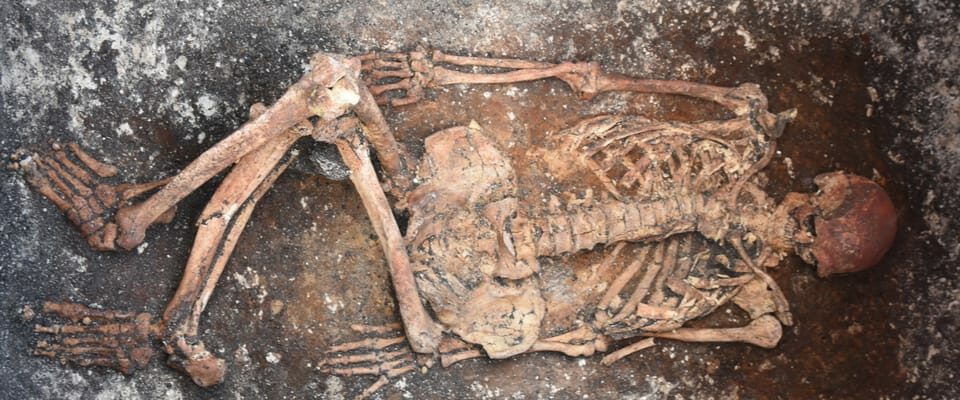Contents
Good gene – bad gene: The genes that cause multiple sclerosis today were useful 5,000 years ago. This is shown by new genetic analyzes of prehistoric skeletons.
About 5,000 years ago, in the Bronze Age, a large migration movement affected the European population: from the Pontic steppe, located northeast of the Black Sea, the Yamnaya pastoral people migrated westward and spread across Europe. In addition to their animals, the steppe shepherds bring something else with them to their new home: risk genes for multiple sclerosis.
The discovery of the origin of multiple sclerosis
An international research team led by the renowned Danish geneticist Eske Willerslew discovers the surprising origin of multiple sclerosis. To do this, the researchers carried out DNA analyzes of prehistoric skeletons. The goal of the large, multi-year project: “to understand the origins of disease risks and the migration history of Europe,” says Willerslew.
The first disease the research team looked at was multiple sclerosis. “What we found surprised everyone involved,” says bioinformatician William Barrie: “These genetic variants gave people a survival advantage back then. We think the genes protected them from the pathogens they were exposed to through their animals.”
Yamnaya Nomands: successful against infectious diseases
At that time the Yamnaja lived closely with their animals. This means they are in constant contact with their germs: worms, mites and other parasites; bacteria such as tuberculosis; and a variety of viruses, for example herpes or influenza viruses. Such pathogens can spread to humans. We now know that the majority of all infectious diseases in humans are zoonoses – that is, they come from animals.
Those who carried the genes in their genome had a better chance of survival and passed them on to their offspring. This process is called positive selection.
The Yamnaya people of 5,000 years ago defended themselves biologically successfully against zoonoses: with a series of genes that affect the immune system. “The genes that cause MS today were useful back then,” explains William Barrie. “Those who carried it in their genetic makeup had a better chance of survival and passed it on to their offspring. This process is called positive selection.”
Legend:
The approximately 5,000-year-old skeleton of a Yamnaya rider, found in Bulgaria.
AFPMichał PodsiadłoUniversity of Helsinki
There are now 233 known gene variants in multiple sclerosis that make people more susceptible to the disease. The researchers found many of these genes in the Yamnaya DNA samples. “Originally these were good, normal genes,” says doctor Lars Fugger from the University of Oxford. “That means: MS did not arise from mutations, but rather from a natural selection process.” This is a first step towards “demystifying” MS, says Lars Fugger.
This statement may be difficult to swallow for those affected. Because MS severely affects life, with great fatigue, muscle weakness and other symptoms. In MS, the body’s own immune cells attack the insulating layer of nerve fibers in the brain and spinal cord. That’s why the disease is treated, among other things, with immunosuppressants – drugs that suppress the immune system.
How a “good gene” becomes a “bad gene”.
But how does a genetic predisposition that was originally good turn into a dreaded autoimmune disease?
The researchers explain this process with the greatly changed living conditions over the past 200 years, particularly with the advent of hygiene. “We move in germ-free environments and eat completely differently,” says virologist Astrid Iversen from the University of Oxford. “Then the originally protective immune system can become a threat. By overreacting and turning against her own body.”
The researchers now want to target other diseases and use old DNA samples to check whether their theory about MS also applies to other autoimmune diseases.
